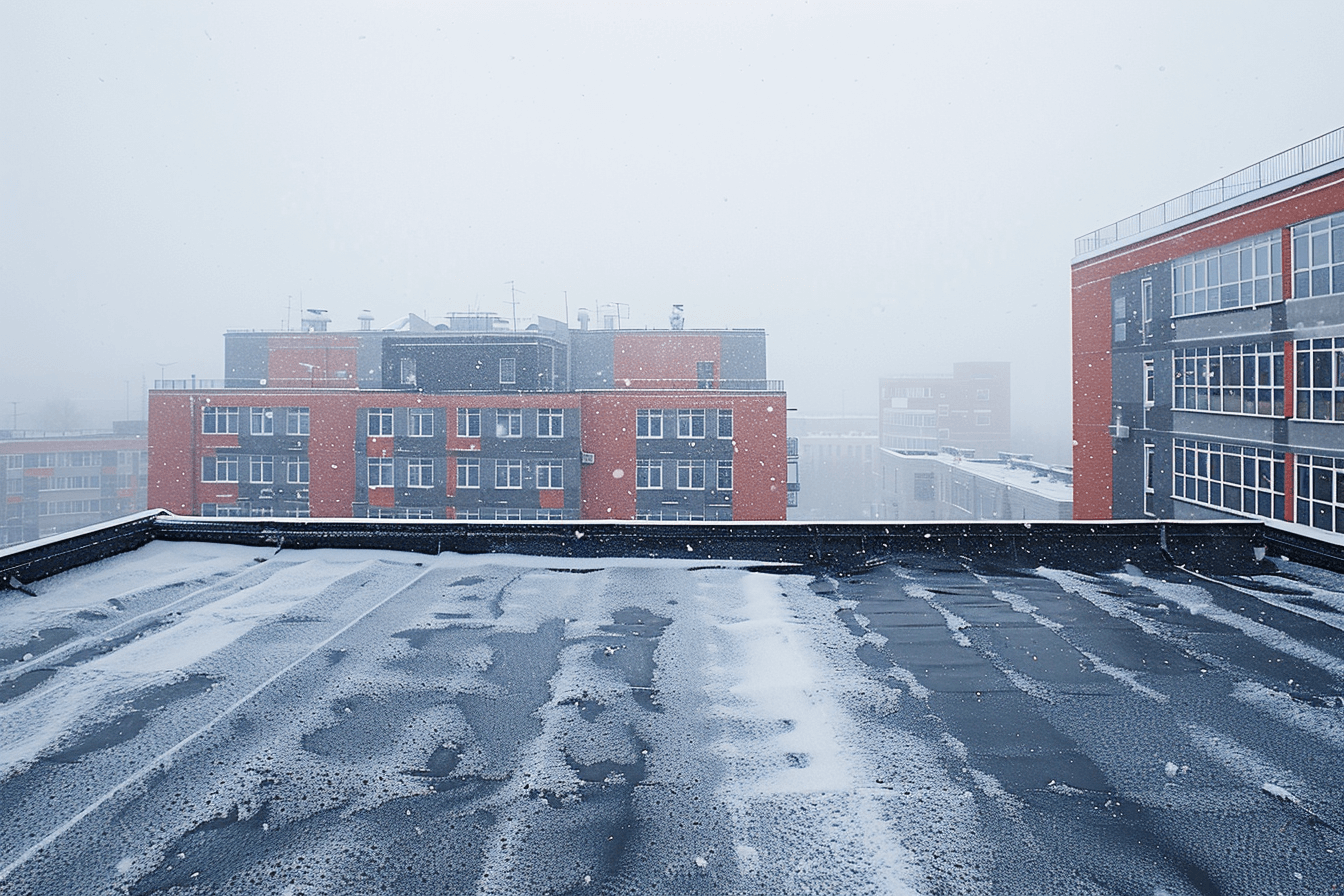
EPDM (Ethylene Propylene Diene Monomer) roofing, a.k.a “rubber roofing” is a prevalent choice for flat and low-slope roofs. Its wide adoption is attributed to its durability, cost-effectiveness, and ease of maintenance. It goes without saying that choosing a roofing material is a big decision, so hopefully this helps makes that decision easier!
Pros of EPDM Roofing
Durability: EPDM is exceptionally durable, with a typical lifespan of 20 to 30 years. It resists damage from UV rays, ozone, and extreme temperatures, making it an excellent choice for various climates.
Cost-Effectiveness: Compared to other roofing materials, EPDM is relatively inexpensive both in terms of initial installation and long-term maintenance. Its durability and minimal upkeep requirements contribute to its overall cost-efficiency.
Ease of Installation: The material’s lightweight and flexible nature makes it easy to install. It can be cut to fit irregular roof shapes and sizes, which simplifies the installation process and reduces labor costs. All that said, it’s still generally recommended that professional roofers handle the installation. This makes sure that the roof is properly sealed and secured, so other issues don’t pop up later in the future.
Seasonal Factors: EPDM roofing installation can be temperature-sensitive. For the best results, it should not be installed in temperatures below 45°F (7°C), as the adhesives used for sealing require warmer conditions to properly bond. Fortunately here in Texas, that’s often not an issue! If you’re elsewhere, we’d suggest in early fall, spring, and summer.
Energy Efficiency: EPDM roofs are available in both black and white finishes, which can help in managing heating and cooling costs. The white coating, in particular, reflects the sun’s rays, helping to keep buildings cooler in warm climates.
Low Maintenance: EPDM roofing requires less maintenance than most other roofing materials. It is not prone to cracks and does not require frequent sealing or repainting.
Cons of EPDM Roofing
While EPDM roofing offers several benefits, as with anything else, there are also drawbacks to consider. One of the primary concerns is the aesthetic limitations. To put it simply, it’s just not very pretty. EPDM typically comes in basic black or white, which may not suit every building’s style. And even if it did, it’s still plain and quite boring. Most roofs that opt for this won’t need something “pretty” necessarily, but it’s still worth considering nonetheless.
Additionally, the success of an EPDM roof heavily depends on the quality of the installation. Poor installation can lead to issues such as leaks and reduced lifespan of the roof. It is crucial to engage experienced professionals who are skilled in handling EPDM to avoid these problems.
EPDM’s resistance to weather does not extend to physical impacts. The material can be punctured by falling branches or damaged during routine maintenance activities on the roof. This susceptibility necessitates cautious handling and occasional repairs.
Another point to consider is the potential for shrinkage over time. As EPDM ages, it can shrink and pull away from roof edges and flashings. This shrinkage may result in gaps that could lead to water ingress and ponding if not regularly checked and maintained.
Ancillary Benefits

Beyond the basic pros and cons, EPDM roofing offers additional environmental benefits that may be appealing. It is recognized for its environmental friendliness, primarily because it is made from recyclable materials. This means that at the end of its lifespan, the EPDM material can be recycled rather than contributing to landfill waste.
Moreover, EPDM’s versatility also extends to its application across a variety of roofing projects. Whether it’s a residential building or a commercial complex, EPDM can be tailored to fit. Its ability to handle different climates and roof designs makes it a flexible choice for many architects and builders.
Finally, as its performance in harsh weather conditions is a significant advantage, as mentioned already. EPDM maintains its integrity in extreme temperatures, from freezing cold to scorching heat, making it suitable for a wide range of geographical locations. Keep in mind what we mentioned though: if harsh weather means lots of potential physical impacts (hail, debris, etc), some of this advantage is lost.
—
This “rubbery” material is an economical choice, as well as environmentally friendly. These factors, among many others, increases its appeal for those committed to sustainability. Make sure that whatever decision you make, you weigh the decision carefully, and ideally, contact a local roofing company that can help you.
